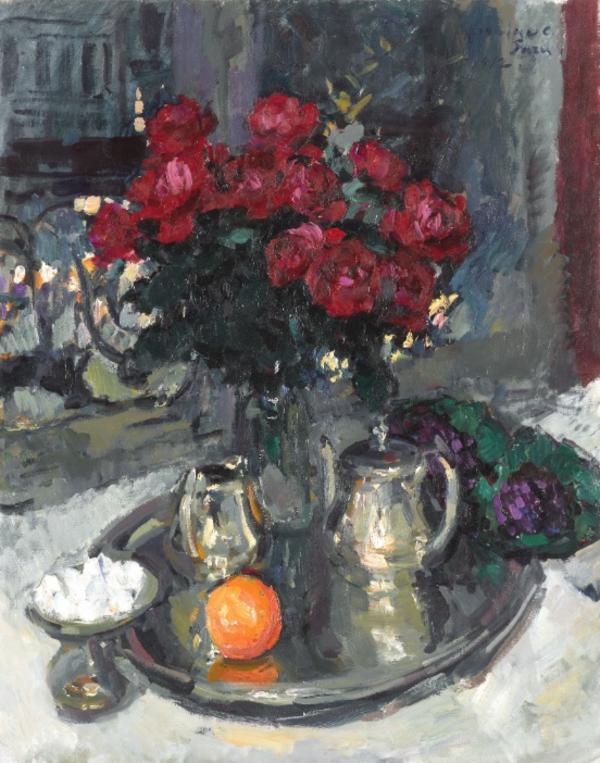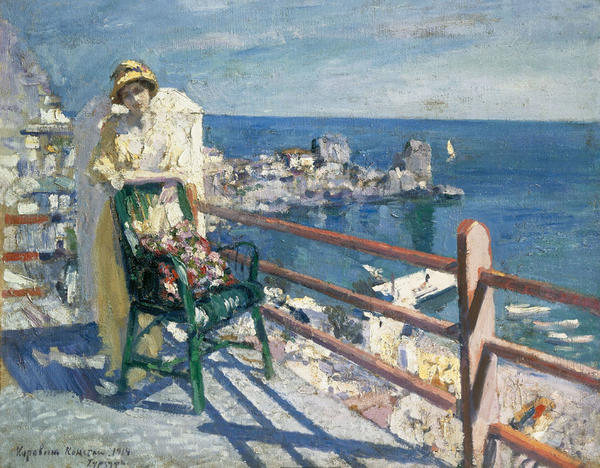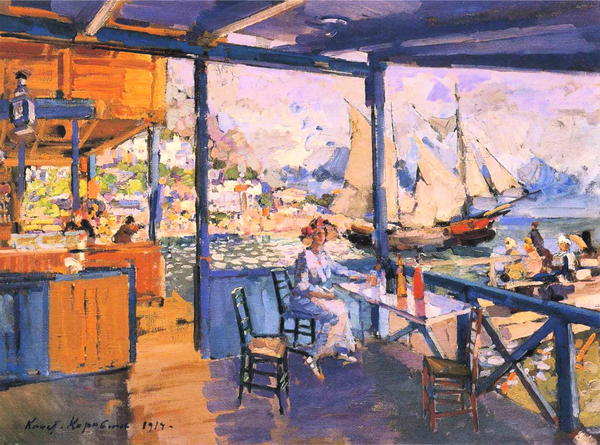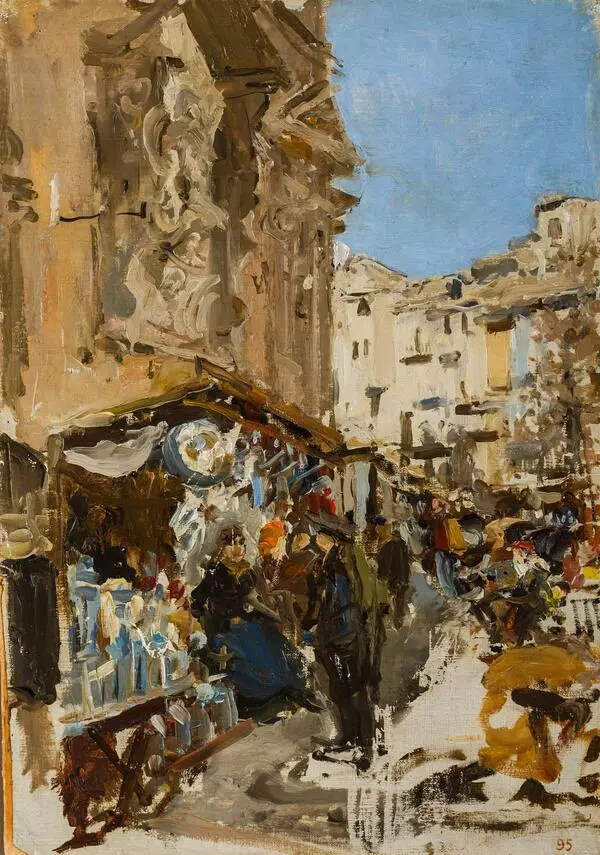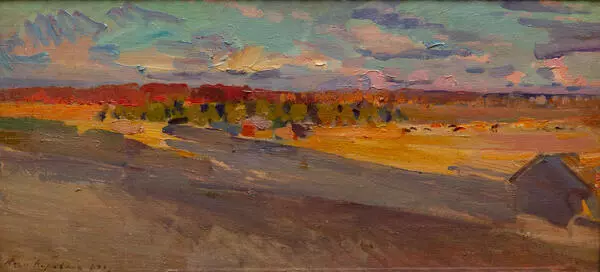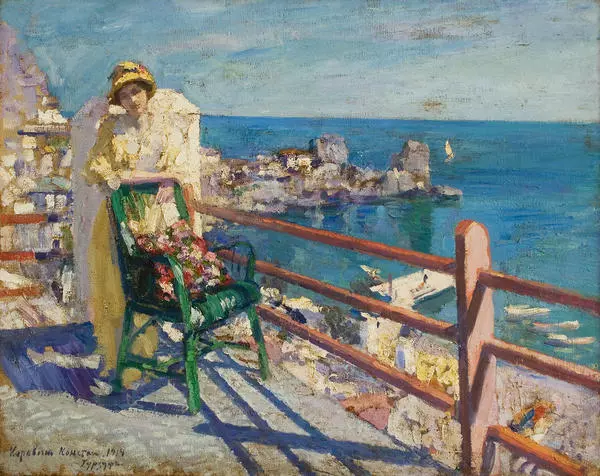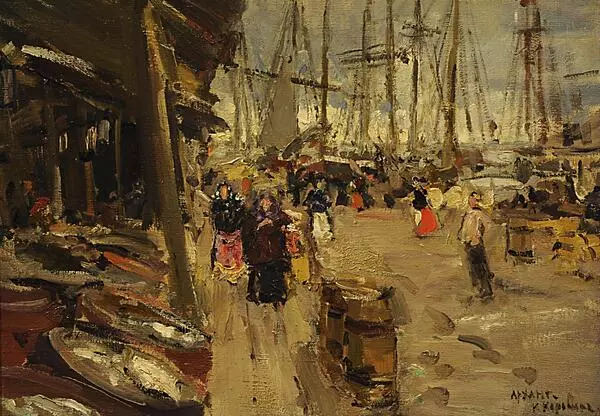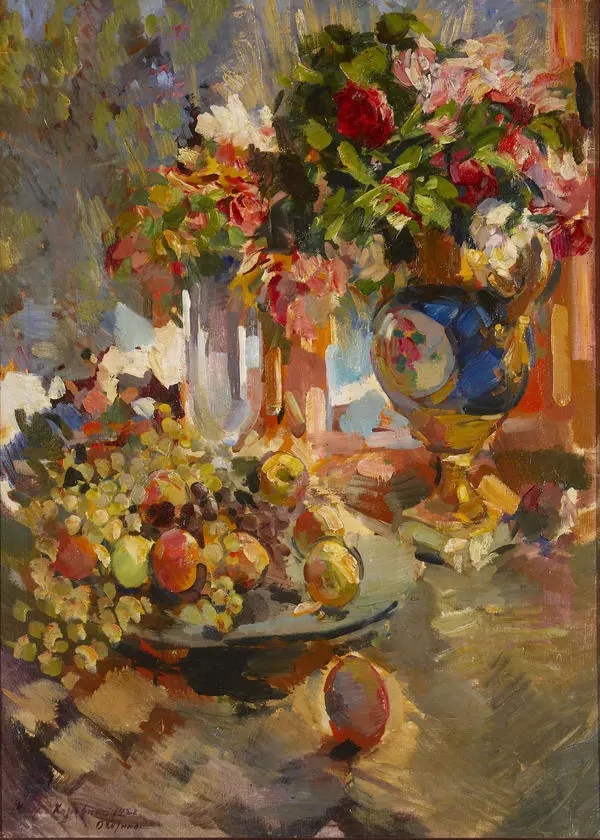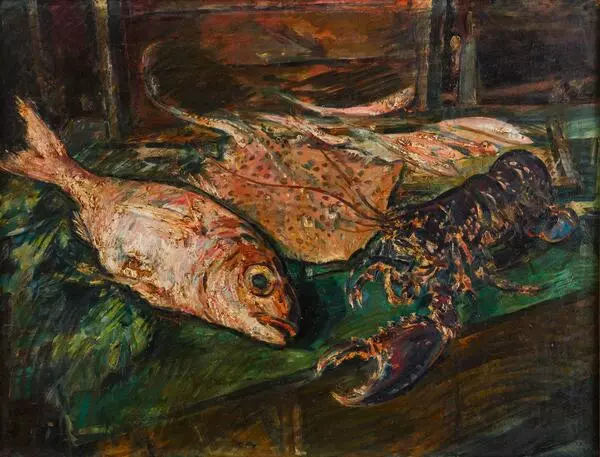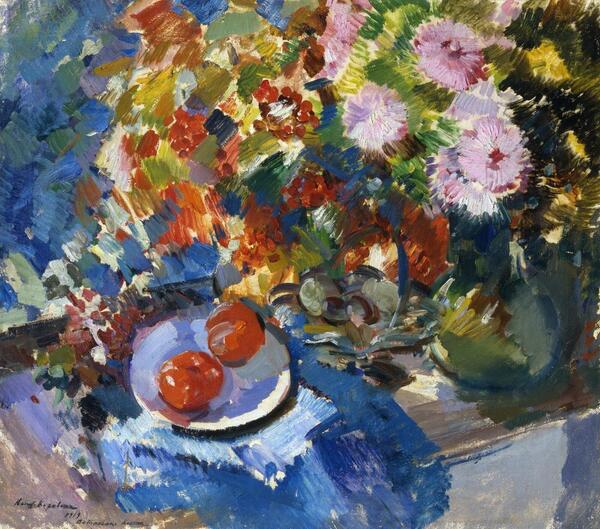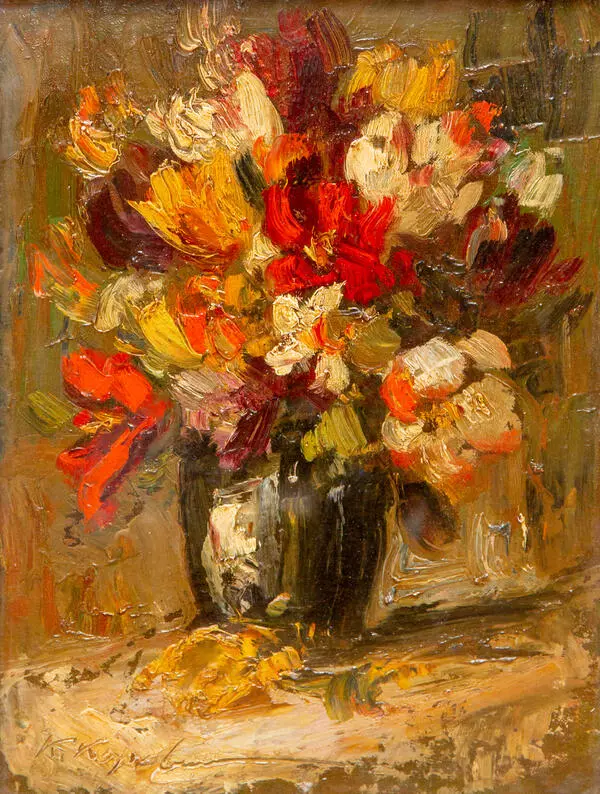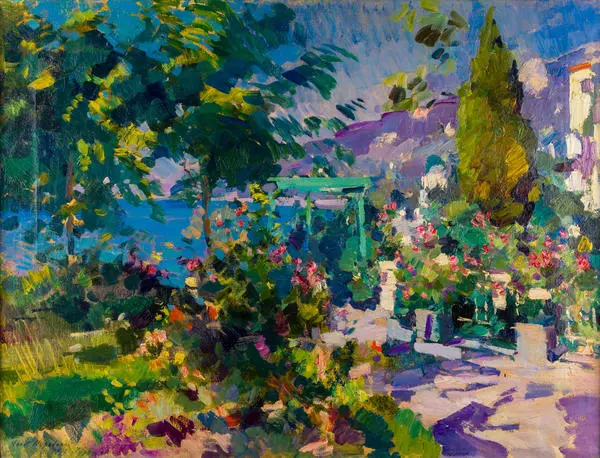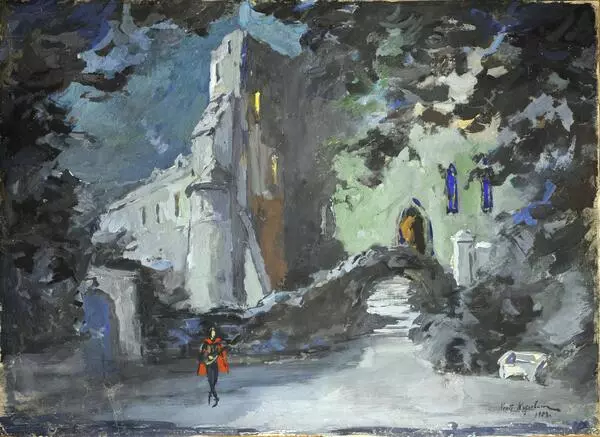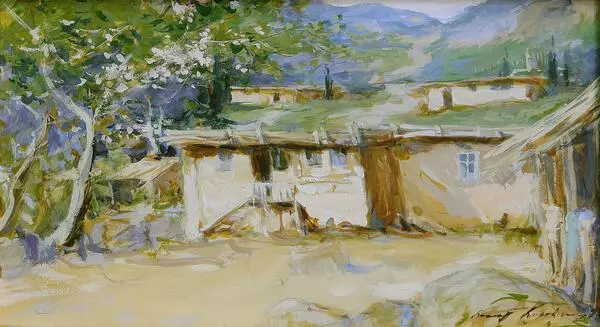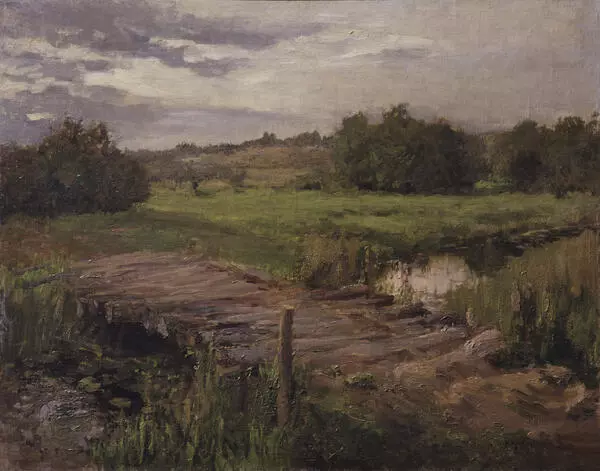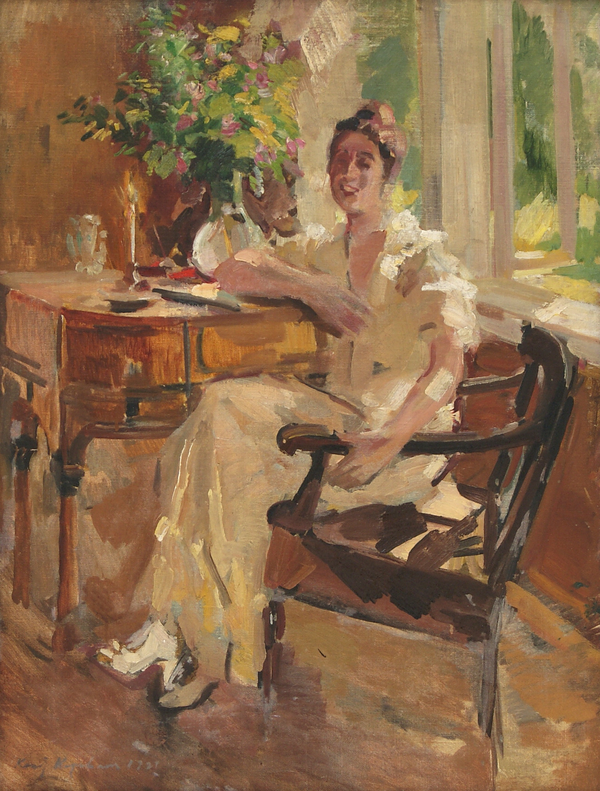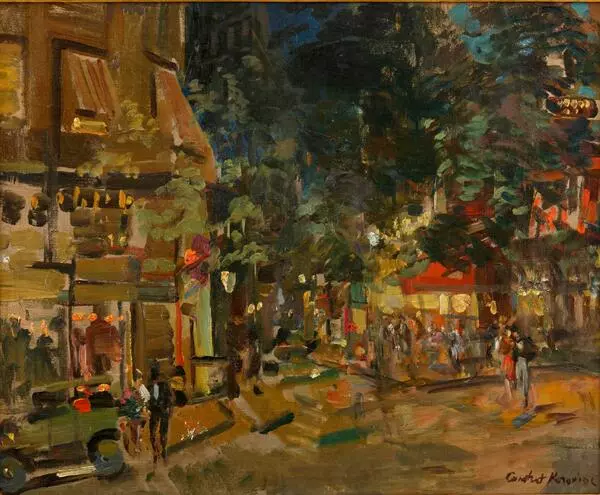Konstantin Korovin created the picture Flowers. Gurzuf in 1916. The artist painted this still-life in the village of Gurzuf, in his summer house Salammbo on the Black Sea coast. Between 1910 and 1917, he stayed there for long spells. At the time, Konstantin Korovin got infatuated with still-lifes. Roses were his favorite thing to paint. For every flower arrangement, it would take Korovin a while to select the appropriate vase in terms of shape, size and color shade. The artist would place flowers by a window, on the verandah or with the sea in the background. Most frequently, he would use rich colors to paint them and would add bright sunlight.
Flowers. Gurzuf
Creation period
1916
Dimensions
87,9x66,7 cm
Technique
Oil on canvas
Collection
Exhibition
20
Open in app#1
Konstantin Korovin
Flowers. Gurzuf
#2
#3
Roses and Violets. 1912. Source: The State Tretyakov Gallery
Biographer Vera Domiteyeva explained why the rose was the master’s favorite flower: “The motif was banal to a fault. And it was picked precisely for that reason. Because the most beautiful of the flowers is incontestable in its perfection.” Roses often popped up in portraits and in landscapes. The artist depicted them not only in Gurzuf: For instance, in the 1912 still-life Roses and Violets, night Paris can be seen through the window.
#4
Korovin painted Flowers. Gurzuf in the impressionistic manner. The author captured in the painting all the flecks of light and shades that appeared in the daylight. He said himself that in his works he was trying to grasp the motif as a whole, without splitting it into parts. By a tight and broad stroke, he sculptured the shape in two or three nonchalant dashes. Contemporaries called the artist Mozart of Painting for the speed of his brushwork and bright color combinations. His friend Nadezhda Komarovskaya recalled that he worked very quickly: As lighting changed in the morning, in the daytime and in the evening, the artist changed canvases.
#8
Korovin became fond of Impressionism when he was still a student of the Moscow School of Painting, Sculpture and Architecture. Step by step, he worked out a completely free manner. He said to his pupils that it was necessary “not to match tone to tone, [but] to take shades and colors separately, to whack them on canvas, without shading them off.”
#5
Gurzuf. 1914. Source: wikipedia.org
#9
In 1922, Konstantin Korovin emigrated. He lived in Paris the last 16 years of his life. The Yaroslavl Museum of Fine Arts has the country’s only collection of his late-year Paris works. It was Gala (Galina) Solovieva-Barbisan who donated the pictures to the museum collection. She had made acquaintance with the artist in the 1930s. At the time, Korovin was pressed for money, so Solovieva-Barbisan decided to help the painter, and bought 11 pieces from him.
#7
A Wharf in Gurzuf. 1914. Source: wikipedia.org
#10
Yaroslavl Museum of Fine Arts
read morehide
00:00
00:00
1x
Flowers. Gurzuf
Creation period
1916
Dimensions
87,9x66,7 cm
Technique
Oil on canvas
Collection
Exhibition
20
Open in app
Share


